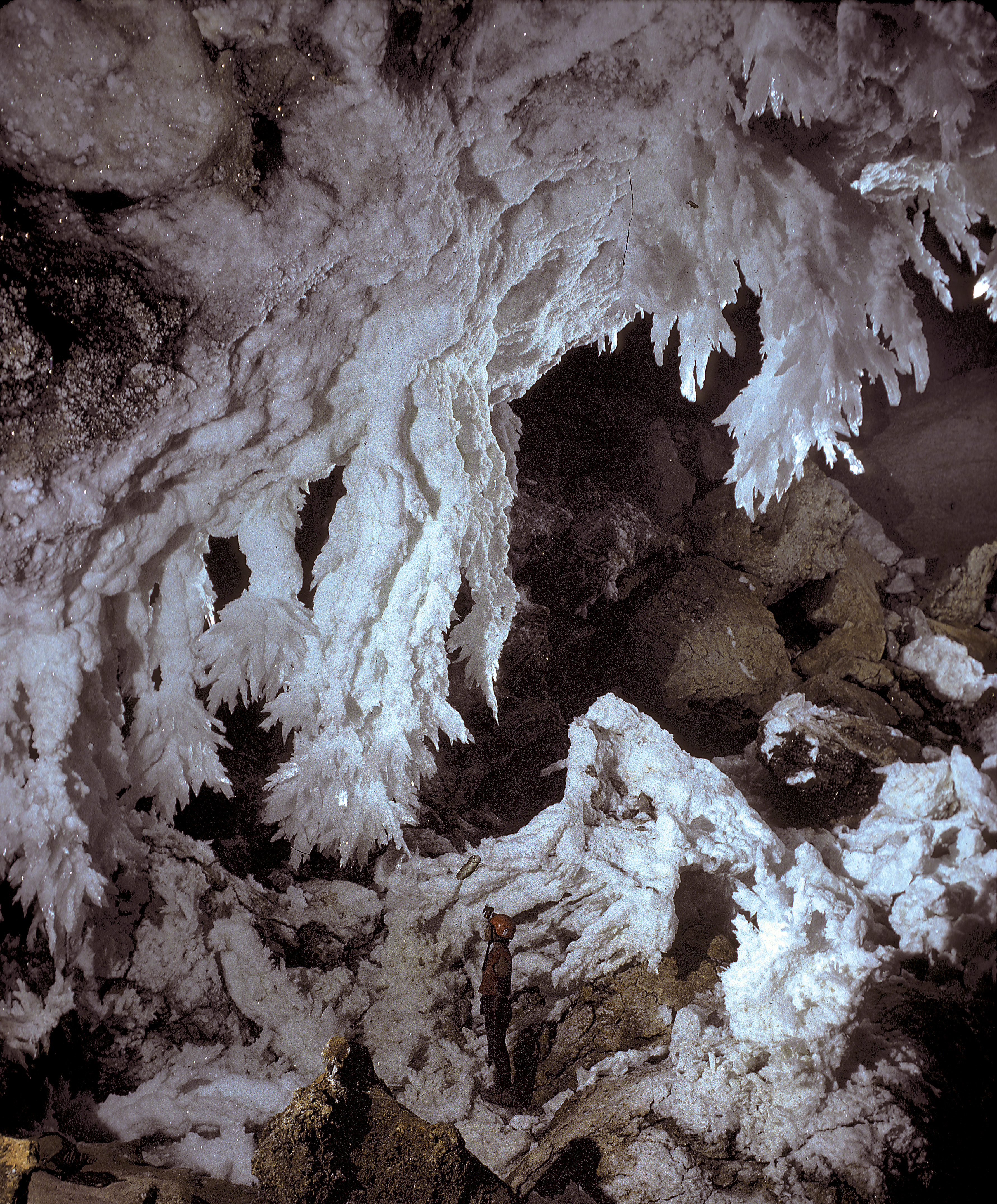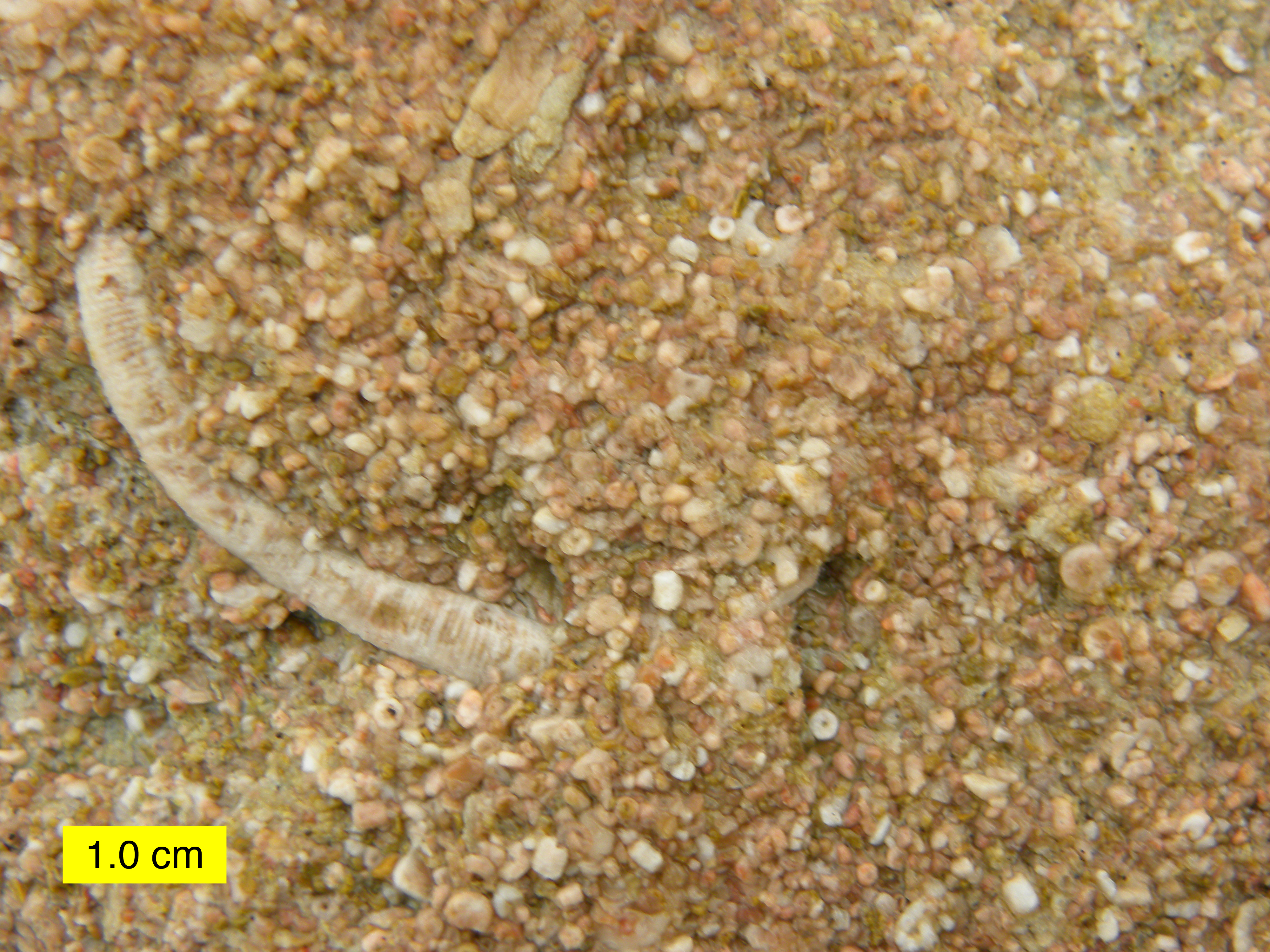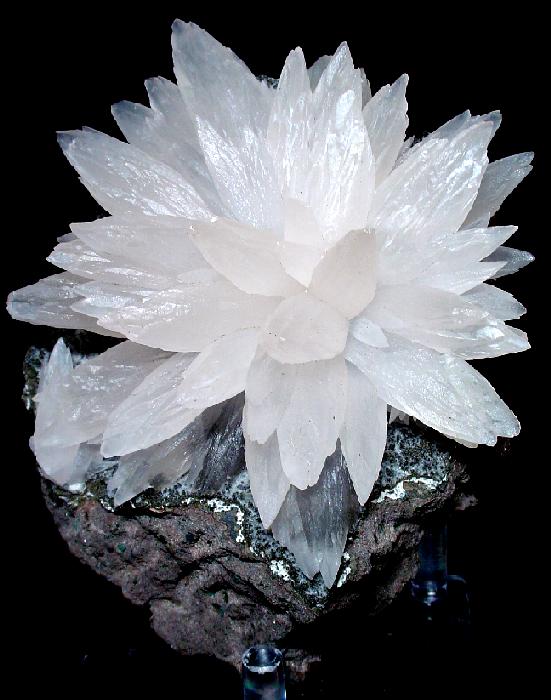|
Greenbrier Group
The Greenbrier Limestone, also known locally as the "Big Lime", is an extensive limestone Geological unit, unit deposited during the Middle Mississippian age, Mississippian Epoch (345.3 ± 2.1 – 326.4 ± 1.6 Ma), part of the Carboniferous, Carboniferous Period. This stratum, rock stratum is present below ground in much of West Virginia and neighboring Kentucky, and extends somewhat into adjacent western Maryland and southwestern Virginia. The name derives from the Greenbrier River in West Virginia. Greenbrier Limestone is in some places more than 400 feet (120 metres) thick, allowing it to trap large quantities of oil and gas. Since this carbonate rock erodes quickly in the region's wet climate, outcrops are not prominent and are often quarried. The Greenbrier Limestone is subdivided into six stratigraphic units. In ascending order, they are Denmar Limestone, Taggard Shale, Pickaway Limestone, Union Limestone, Greenville Shale, and Alderson Limestone. The limestones in this i ... [...More Info...] [...Related Items...] OR: [Wikipedia] [Google] [Baidu] |
Sinks Of Gandy
The Sinks of Gandy — also called the Sinks of Gandy Creek, or simply "The Sinks" — are a modestly celebrated cave and underground stream at Osceola in eastern Randolph County, West Virginia, United States. The Sinks are on private property within the Monongahela National Forest. Description The Sinks are a natural tunnel accommodating Gandy Creek, a tributary of Dry Fork, for about as it passes under a spur of Yokum Knob to reemerge on the opposite side of Randolph County Route 40 (Dry Fork Road). The southern (upstream) entrance to the Sinks, about wide and high, is in a low ledge of limestone in a large depressed meadow. It consists of a simple longitudinal passage, from 4 to high, with a few minor side passages, not much apparent from the main passage. The main cave passage averages 40 to wide, but in some places up to wide. In some sections the stream occupies the entire floor of the passage, but in other sections it is confined to a narrow trench. The northern (dow ... [...More Info...] [...Related Items...] OR: [Wikipedia] [Google] [Baidu] |
Virginia
Virginia, officially the Commonwealth of Virginia, is a U.S. state, state in the Southeastern United States, Southeastern and Mid-Atlantic (United States), Mid-Atlantic regions of the United States between the East Coast of the United States, Atlantic Coast and the Appalachian Mountains. The state's List of capitals in the United States, capital is Richmond, Virginia, Richmond and its most populous city is Virginia Beach, Virginia, Virginia Beach. Its most populous subdivision is Fairfax County, Virginia, Fairfax County, part of Northern Virginia, where slightly over a third of Virginia's population of more than 8.8million live. Eastern Virginia is part of the Atlantic Plain, and the Middle Peninsula forms the mouth of the Chesapeake Bay. Central Virginia lies predominantly in the Piedmont (United States), Piedmont, the foothill region of the Blue Ridge Mountains, which cross the western and southwestern parts of the state. The fertile Shenandoah Valley fosters the state's mo ... [...More Info...] [...Related Items...] OR: [Wikipedia] [Google] [Baidu] |
List Of Types Of Limestone
This article lists types of limestone arranged according to generic type and location. Generic limestone categories This section is a list of generic types of limestone. * * * * * * * * Marble – Metamorphic limestone * * * * * The following sections include both formal stratigraphic unit names and less formal designations, although are these are not differentiated. Africa Egypt * Tura limestone, used for the Great Pyramid casing stones *Mokattam limestone; Great Pyramid core stones and head of the Great Sphinx are of the "Member III" stratum * Galala marble (a type of limestone, not a true marble) Asia India * * Israel (West Bank) * * Europe Austria * Belgium *, (not a "true marble"; Devonian limestone) * * Croatia * France * *, or "Paris stone" (city buildings are widely faced with it) **, or Oise, limestone (variety of Lutetian) * *, in the Loire Valley Germany * * Gibraltar * Ireland * , not a "true marble"; fossiliferous Carbonife ... [...More Info...] [...Related Items...] OR: [Wikipedia] [Google] [Baidu] |
Solutional Cave
A solutional cave, solution cave, or karst cave is a cave usually formed in a soluble rock like limestone (Calcium carbonate, with chemical formula ''CaCO3''). It is the most frequently occurring type of cave. It can also form in other rocks, including chalk, Dolomite (rock), dolomite, marble, Evaporite, salt beds, and gypsum. Process Bedrock is dissolved by carbonic acid in rainwater, groundwater, or Humic substance, humic acids from decaying vegetation, that seeps through Bed (geology), bedding planes, Geological fault, faults, Joint (geology), joints, and the like. Over time, the surface terrain breaks up into Limestone pavement, clints separated by grikes and punctuated by Sinkhole, sinkholes into which streams may disappear, crevices expand as the walls are dissolved to become caves or cave system. These may turn into large caverns or ''dolines'' when the roof collapses. The portions of a solutional cave that are below the water table or the local level of the groundwater a ... [...More Info...] [...Related Items...] OR: [Wikipedia] [Google] [Baidu] |
Oolite
Oolite or oölite () is a sedimentary rock formed from ooids, spherical grains composed of concentric layers. Strictly, oolites consist of ooids of diameter 0.25–2 millimetres; rocks composed of ooids larger than 2 mm are called pisolites. The term ''oolith'' can refer to oolite or individual ooids. Composition Ooids are most commonly composed of calcium carbonate (calcite or aragonite), but can be composed of phosphate, clays, chert, dolomite or iron minerals, including hematite. Dolomitic and chert ooids are most likely the result of the replacement of the original texture in limestone. Oolitic hematite occurs at Red Mountain near Birmingham, Alabama, along with oolitic limestone. They are usually formed in warm, supersaturated, shallow, highly agitated marine water intertidal environments, though some are formed in inland lakes. The mechanism of formation starts with a small fragment of sediment acting as a 'seed', such as a piece of a shell. Strong intertidal ... [...More Info...] [...Related Items...] OR: [Wikipedia] [Google] [Baidu] |
Packstone
Under the Dunham classification (Dunham, 1962Dunham, R.J. (1962) Classification of carbonate rocks according to depositional texture. In: Classification of Carbonate Rocks (Ed. W.E. Ham), Am. Assoc. Pet. Geol. Mem., 1, 108–121.) system of limestones, a packstone is defined as a grain-supported carbonate rock that contains 1% or more mud-grade fraction. This definition has been clarified by Lokier and Al Junaibi (2016) as ''a carbonate-dominated lithology containing carbonate mud (2 mm''. The identification of packstone A study of the adoption and use of carbonate classification systems by Lokier and Al Junaibi (2016) identified three common problems encountered when describing a packstone: * Failure to identify the fabric as supported by the sand grade grain-size fraction - resulting in misidentification as wackestone Under the Dunham classification (Dunham, 1962Dunham, R.J., 1962. Classification of carbonate rocks according to depositional texture. In: W.E. Ham (Ed.), Class ... [...More Info...] [...Related Items...] OR: [Wikipedia] [Google] [Baidu] |
Grainstone
Under the Dunham classification (Dunham, 1962) system of limestones, a grainstone is defined as a grain-supported carbonate rock that contains less than 1% mud-grade material. This definition has recently been clarified as ''a carbonate-dominated rock that does not contain any carbonate mud and where less than 10% of the components are larger than 2 mm.'' The spaces between grains may be empty (pores) or filled by cement. The identification of grainstone The presence of any primary carbonate mud precludes a classification of grainstone. A study of the use of carbonate classification systems by Lokier and Al Junaibi highlighted that the most common source of confusion in the classification of grainstone was to misidentify fine-grained internal micrite, generated by in-situ processes, as clay–silt grade sediment - thus resulting in the misidentification of grainstone as packstone. Failure to correctly determine the size and abundance of component grains greater than two millime ... [...More Info...] [...Related Items...] OR: [Wikipedia] [Google] [Baidu] |
Stratigraphic
Stratigraphy is a branch of geology concerned with the study of rock layers (strata) and layering (stratification). It is primarily used in the study of sedimentary and layered volcanic rocks. Stratigraphy has three related subfields: lithostratigraphy (lithologic stratigraphy), biostratigraphy (biologic stratigraphy), and chronostratigraphy (stratigraphy by age). Historical development Catholic priest Nicholas Steno established the theoretical basis for stratigraphy when he introduced the law of superposition, the principle of original horizontality and the principle of lateral continuity in a 1669 work on the fossilization of organic remains in layers of sediment. The first practical large-scale application of stratigraphy was by William Smith in the 1790s and early 19th century. Known as the "Father of English geology", Smith recognized the significance of strata or rock layering and the importance of fossil markers for correlating strata; he created the first geo ... [...More Info...] [...Related Items...] OR: [Wikipedia] [Google] [Baidu] |
Carbonate Rock
Carbonate rocks are a class of sedimentary rocks composed primarily of carbonate minerals. The two major types are limestone, which is composed of calcite or aragonite (different crystal forms of CaCO3), and Dolomite (rock), dolomite rock (also known as dolostone), which is composed of Dolomite (mineral), dolomite (CaMg(CO3)2). They are usually Dunham classification, classified on the basis of texture and grain size. Importantly, carbonate rocks can exist as metamorphic and igneous rocks, too. When recrystallized carbonate rocks are Metamorphic rock, metamorphosed, marble is created. Rare igneous rock, igneous carbonate rocks even exist as Intrusive rock, intrusive carbonatites and, even rarer, there exists volcanic carbonate lava. Carbonate rocks are also crucial components to understanding Geological history of Earth, geologic history due to processes such as diagenesis in which carbonates undergo compositional changes based on kinetic effects. The correlation between this compo ... [...More Info...] [...Related Items...] OR: [Wikipedia] [Google] [Baidu] |
Stratum
In geology and related fields, a stratum (: strata) is a layer of rock or sediment characterized by certain lithologic properties or attributes that distinguish it from adjacent layers from which it is separated by visible surfaces known as either '' bedding surfaces'' or ''bedding planes''.Salvador, A. ed., 1994. ''International stratigraphic guide: a guide to stratigraphic classification, terminology, and procedure. 2nd ed.'' Boulder, Colorado, The Geological Society of America, Inc., 215 pp. . Prior to the publication of the International Stratigraphic Guide, older publications have defined a stratum as being either equivalent to a single bed or composed of a number of beds; as a layer greater than 1 cm in thickness and constituting a part of a bed; or a general term that includes both ''bed'' and '' lamina''.Neuendorf, K.K.E., Mehl, Jr., J.P., and Jackson, J.A. , eds., 2005. ''Glossary of Geology'' 5th ed. Alexandria, Virginia, American Geological Institute. 779 pp. ... [...More Info...] [...Related Items...] OR: [Wikipedia] [Google] [Baidu] |
Carboniferous
The Carboniferous ( ) is a Geologic time scale, geologic period and System (stratigraphy), system of the Paleozoic era (geology), era that spans 60 million years, from the end of the Devonian Period Ma (million years ago) to the beginning of the Permian Period, Ma. It is the fifth and penultimate period of the Paleozoic era and the fifth period of the Phanerozoic eon (geology), eon. In North America, the Carboniferous is often treated as two separate geological periods, the earlier Mississippian (geology), Mississippian and the later Pennsylvanian (geology), Pennsylvanian. The name ''Carboniferous'' means "coal-bearing", from the Latin ("coal") and ("bear, carry"), and refers to the many coal beds formed globally during that time. The first of the modern "system" names, it was coined by geologists William Conybeare (geologist), William Conybeare and William Phillips (geologist), William Phillips in 1822, based on a study of the British rock succession. Carboniferous is the per ... [...More Info...] [...Related Items...] OR: [Wikipedia] [Google] [Baidu] |
Mississippian Age
The Mississippian ( ), also known as Lower Carboniferous or Early Carboniferous, is a subperiod in the geologic timescale or a subsystem of the geologic record. It is the earlier of two subperiods of the Carboniferous period lasting from roughly 358.9 to 323.2 million years ago. As with most other geochronologic units, the rock beds that define the Mississippian are well identified, but the exact start and end dates are uncertain by a few million years. The Mississippian is so named because rocks with this age are exposed in the Mississippi Valley. The Mississippian was a period of marine transgression in the Northern Hemisphere: the sea level was so high that only the Fennoscandian Shield and the Laurentian Shield were dry land. The cratons were surrounded by extensive delta systems and lagoons, and carbonate sedimentation on the surrounding continental platforms, covered by shallow seas. In North America, where the interval consists primarily of marine limestones, it ... [...More Info...] [...Related Items...] OR: [Wikipedia] [Google] [Baidu] |






